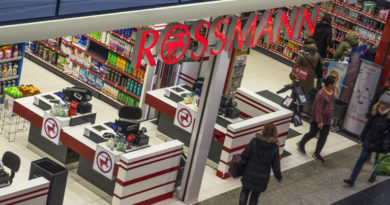Security concerns prevent further development of Online Shopping in Europe
CBRE Research suggests that only 17% of Hungarians use the internet for shopping online but that increases to 32% for the 16-24 year old
Security concerns remain the biggest obstacle to the further development of online shopping in Europe despite ever-increasing use of consumer technology products and advances made in the security of credit card payment methods such as the introduction of ‘chip and pin’, according to new research by leading global property adviser CB Richard Ellis (CBRE).
The CBRE preview findings come at a time when governments and industry groups across Europe are aiming to kick-start economies, with consumer spending seen as a vital ingredient for creating economic growth. While the digital revolution is driving the popularity of shopping online in many European countries, for millions of other consumers the fear over online security is the barrier that prevents them from fully embracing the online shopping experience.
The new research is from ‘Europe’s Online Consumer’, a forthcoming major report from CBRE to be published on September 26 at the World Retail Congress in Berlin. The report is the first pan-European research of its kind, polling more than 10,000 people to understand consumer attitudes to online shopping in 10 European countries. Some of the purchase categories considered in the definition of ‘online shopping’ include: shoes and clothes, books, music and entertainment, groceries, electrical items, cosmetics, pharmacy, and computer games.
When CBRE asked consumers what prevented them from shopping online, security emerged as the top issue – more important than cost of delivery, ease of delivering goods, and lack of a credit card. For those consumers that frequently use the internet to buy products online, security of payment remained a key issue, with people in Spain (48%), Italy (36%), Germany (35%), Great Britain (32%), France (30%), and Sweden (29%), most concerned about internet security stating this issue among their top three concerns.
The CBRE findings also suggested there is a connection between propensity to shop online and to bank online in Europe. The countries that have a higher percentage of people that buy products online such as Sweden (69%), Germany (66%), Great Britain (58%) and France (56%) also have higher levels of internet banking than the countries in Southern Europe where internet use is lower, while in some Eastern European countries online banking has barely taken hold. Given that online banking engages people on a daily basis with money management online, the CBRE research suggests higher levels of use of online banking could help people overcome their fears of shopping online.
Peter Gold, Head of Cross Border Retail, CB Richard Ellis commented: “Understanding the latest consumer dynamics on a pan-European basis helps us to shape retail thinking on tomorrow’s trends. In the age of YouTube, the iPod and Facebook, it is no surprise that Europeans are increasingly using the internet to help make informed browsing and purchasing decisions. However, despite the consumer’s love affair with technology gadgets, it is fears over online security that continue to be the biggest obstacle to online shopping.
Key features of consumer attitudes and behaviour to shopping online in Hungary
§ Young Hungarian adults (16-34, compared to other nationals) are less likely to research products online before buying in a store. They shop less frequently online (with a computer) and are much more likely to use social websites when deciding what to buy.
§ Hungarian women (compared to Hungarian men) are more likely to be concerned with the in-store shopping experience and use social websites when deciding what to buy. Women are least likely to research products online before buying in a store.
§ Hungarian high income consumers (compared to other nationals) are less likely to purchase products online that they cannot buy in a store and visit a store to ‘check out’ the product first, before buying online. High income consumers are more likely to use social websites when deciding what to buy.





























